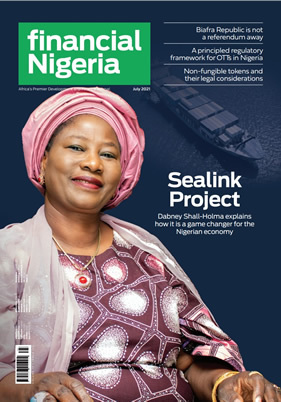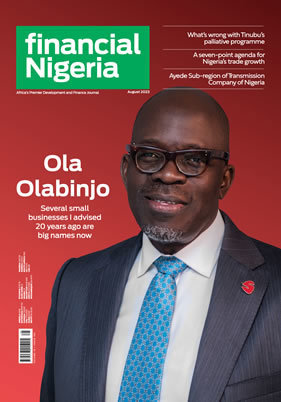What I learned after studying 80 innovation programmes in Africa

Feature Highlight
My team and I are in the process of designing an innovation and entrepreneurship programme which we hope accelerates market creation in Nigeria, and then Africa.
In light of the United States’ abrupt exit from the global development stage (and the slow phasing out of foreign aid spending by other countries), the principles in our book, The Prosperity Paradox: How Innovation Can Lift Nations Out of Poverty, couldn’t be more relevant. In the book, we highlight the importance of investing in market-creating innovations to not only tackle poverty, but also to ignite and sustain prosperity.
Market-creating innovations transform complicated and expensive products into simple and affordable ones, thereby making them more accessible to many more people in society. These innovations are unique as they catalyse job creation (many more people are needed to serve nonconsumers – those who couldn’t afford the product or service prior to accessing the innovation); generate additional tax revenues (the new workers pay income taxes and the new companies pay corporate taxes, and the new consumption increases tax receipts); and triggers a change in the entrepreneurial culture of a place as more people believe their problems can be solved by entrepreneurship and innovation.
Understandably, many philanthropic and development organisations may soon start prioritising programmes that are more sustainable considering the global development landscape. Development programmes that fund entrepreneurship and innovation programmes with the hopes of helping people in low-income countries become more self-sufficient are likely to become more popular. As I’ve written in the past, for-profit models are the best way to help the poor sustainably. This would be a step in the right direction. However, simply funding more entrepreneurship programmes does not guarantee success.
My team and I are in the process of designing an innovation and entrepreneurship programme which we hope accelerates market creation in Nigeria, and then Africa. One of the first tasks we undertook before beginning our design process was to study existing innovation and entrepreneurship programmes in Africa.
We categorised our findings into four main parts. First, who were the programmes targeting? Second, what were the programmes funding, and how much? Third, where were the programmes geographically? And finally, what were the outcomes and how were they measured? Here’s what we learned.
Who?
Most innovation and entrepreneurship programmes in Africa are founder-focused and primarily serve pre-seed and new startups. For the organisations that have age requirements, most target youth between the ages of 18 and 35 years. Finally, approximately half the programmes we analysed are gender neutral. This is important because businesses led by women accounted for less than 2% of total funding raised between 2019 and 2023, according to Africanews citing a Tech Cabal report.
As such, concerted effort must be made to level the playing field for women in entrepreneurship. Tackling systemic barriers that prevent women from fully participating in the economy has the potential to unlock close to $300 billion in Africa, according to a report commissioned by the Mastercard Foundation.
In addition, more effort should be made to support more mature and growth stage entrepreneurs, which brings me to the next thing I learned from this research.
What?
In addition to the vast majority of organisations being supported being early-stage entrepreneurs, many organisations don’t receive any funding from these programmes. The median funding amount was approximately $57,000 while the range was between $0 and one million dollars. Additionally, the median length of a typical programme was five weeks.
This points to the fact that much of the funding in innovation and entrepreneurship is targeted at individuals and is often limited. This is a good thing as an ecosystem is emerging but, over time, more funding should flow to these organisations and programmes.
Consider how the Investing in Innovation programme (where I serve on the steering committee) evolved its operations. During the first two years of the initiative, the programme identified 60 entrepreneurs in the healthcare supply chain across Africa and provided $50,000 to each. In Phase 2, the programme is now more focused and will provide funding of up to $250,000 to a handful of growth stage entrepreneurs working to build the future of pharmacy in Africa. This evolution ensures that entrepreneurs don’t remain in the beginning stage of growth forever. More growth (and especially high growth) requires more funding.
Where?
Many of the programmes we studied were localised. About a third were Africa-wide while almost half were sector agnostic.
There is value in designing an Africa-wide and sector agnostic programme, however, focusing programmes on specific problems in particular localities is important. Innovations often take root in a particular place, at a certain time, designed to solve very specific struggles. Over time, as the innovation provides value to more people, it diffuses. This phenomenon should be applied to how innovation and entrepreneurship programmes are designed. Focus first. Scale and diffuse later.
Outcome
The last factor we studied was how the programmes measured outcomes. It was difficult to measure outcomes beyond metrics such as number of entrepreneurs supported, or funding deployed. More effort should be put into measuring success metrics such as number of jobs created, instances of new consumption initiated, and size of market created. Without creating new consumption, new jobs and tax revenues will not be created. As such, by measuring these factors, innovation and entrepreneurship programmes can get a better sense of the impact they are having in an economy.
Studying 80 innovation programmes in Africa reinforced the need for a more structured and long-term approach to funding entrepreneurship – one that moves beyond early-stage support to sustained growth investment. To truly drive market creation and economic transformation, innovation programmes must prioritise outcome-driven metrics, gender inclusion, and sector-specific localisation strategies that enable sustainable impact.
Efosa Ojomo is a senior research fellow at the Clayton Christensen Institute for Disruptive Innovation, and co-author of The Prosperity Paradox: How Innovation Can Lift Nations Out of Poverty. Efosa researches, writes, and speaks about ways in which innovation can transform organizations and create inclusive prosperity for many in emerging markets.
Other Features
-
-
Nigerian power sector: resolving liquidity concerns
Given financial pressures on the power generation companies and distribution companies, upward tariff revisions ...
-
India has arrived
A founder of the Non-Aligned Movement, India has plenty of experience navigating precarious ...
-
The new CBN foreign exchange code and its implications
With the introduction of the CBN FX code, Nigeria has aligned with leading financial jurisdictions, such as the ...
-
FIRS: Tax revenue as Nigeria’s new ‘crude oil’
President Tinubu deserves to be hailed for the huge jump in the shareable FAAC allocations which has continued an ...
-
DeepSeek and the future of finance
The DeepSeek disruption is a clear signal that the AI landscape in financial services is about to undergo a seismic ...
-
How to sell USDT for cash in Nigeria: A comprehensive guide
Selling USDT for cash in Nigeria doesn’t have to be complicated.
-
A review of the national tax bills
The four tax bills signify a pivotal shift in Nigeria’s tax framework, focusing on critical areas of revenue ...
-
How Tinubu Deviates from IMF/World Bank reform recommendations
President Tinubu should not only adopt IMF’s policies, but he should also heed the recommendations for ...
Most Popular News
- Artificial intelligence can help to reduce youth unemployment in Africa – ...
- Nigeria records $6.83 billion balance of payments surplus in 2024
- Soaring civil unrest worries companies and insurers, says Allianz
- Tariffs stir inflation fears in US but offer targeted industry gains ...
- Tinubu appoints new Board Chair, Group CEO for NNPC Limited
- CBN net reserve hits $23.1 billion, the highest in three years















